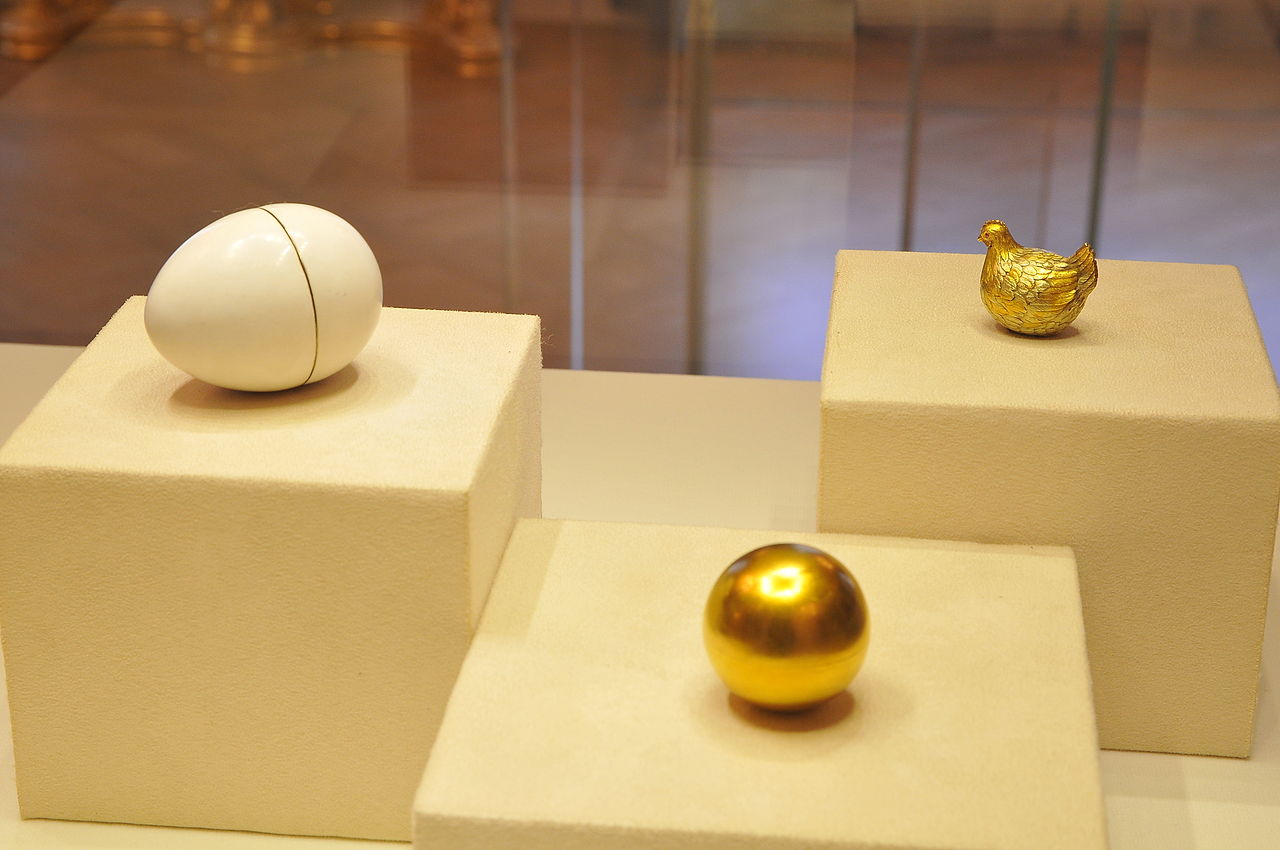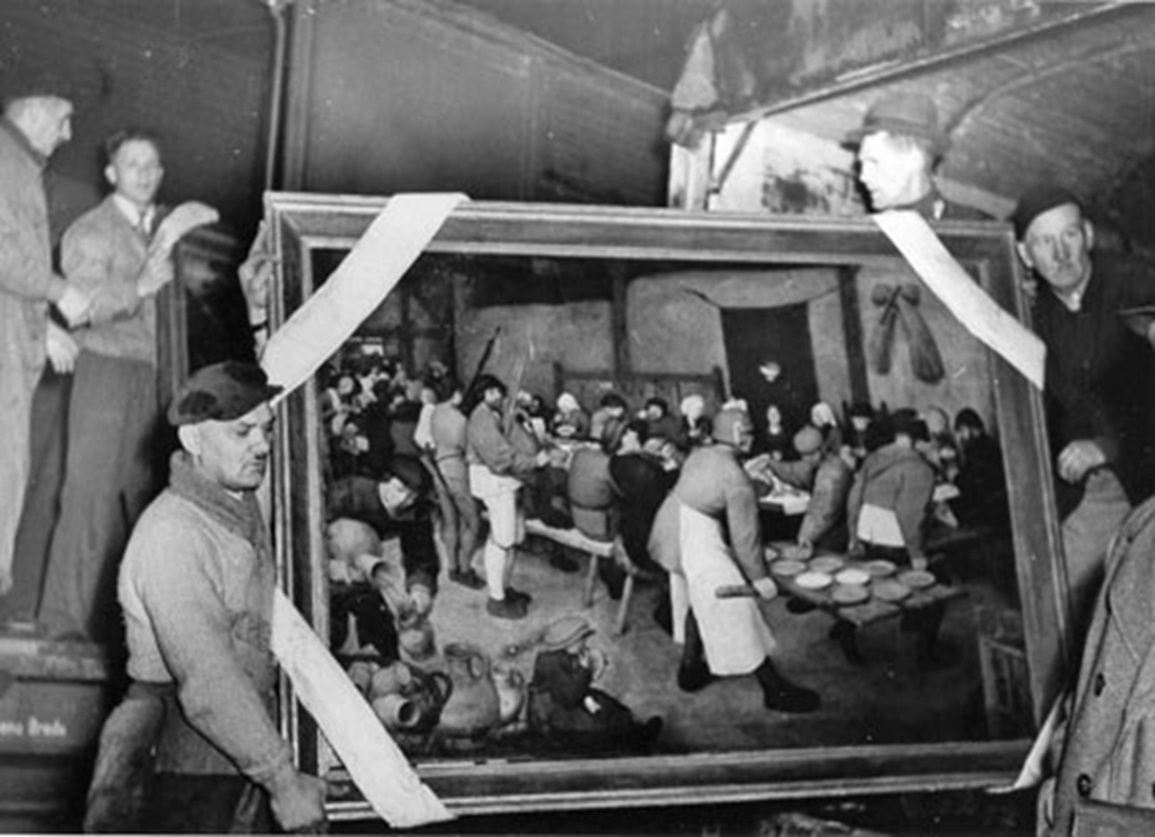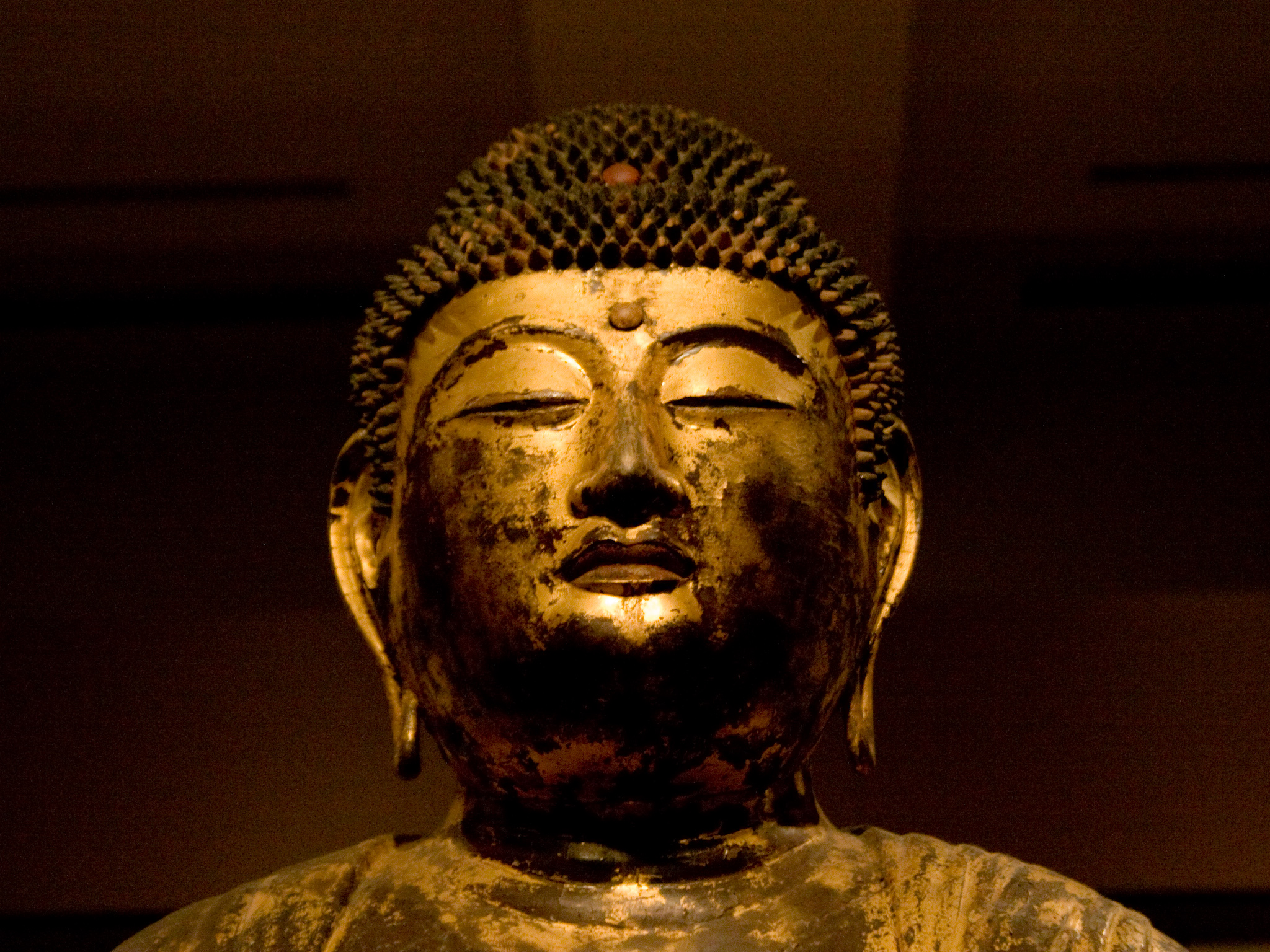Where Did All The Riches Go?
A lot of mystery has surrounded the disappearance of looted or pillaged treasures during WWII. Many items were never recovered, and many believe these treasures are still out there for the taking. Get your treasure map ready and explore the lost relics of time.

German Army Treasure At Lake Toplitz
Rumor has it that the German Army supposedly dumped billions in gold—around $5.6 billion worth of stolen loot—into Lake Toplitz. This remote body of water is located within a secluded ancient forest region deep in the Austrian Alps.
 Petschar, Friedlmeier, Steiermark, Picryl
Petschar, Friedlmeier, Steiermark, Picryl
German Army Treasures At Lake Toplitz
The German Army used the lake as a naval testing ground, and in 1959, £700 million of counterfeit notes were found as part of an elaborate plan to occupy England. At least five divers have perished diving the 300-foot-deep lake looking for the mythological loot.
Skeleton Canyon
Just east of the Arizona-New Mexico border is the Peloncillo Mountains, which contain one of the most notorious corridors in all 1,000 miles: Skeleton Canyon. In the 19th century, the canyon was kind of a place where bootleggers hid their precious stash, and bandits pursued them for it.
 BAlvarius, CC BY-SA 3.0, Wikimedia Commons
BAlvarius, CC BY-SA 3.0, Wikimedia Commons
Skeleton Canyon
It is said that bandits in the late 1880s made a successful pillage of the Mexican town Monterrey and swiped silver, gold, diamonds, statues, and Catholic relics. In their bid to evade arrest, the bandits reportedly buried much of the loot somewhere in the canyon. Another version claims that American outlaws lured the bandits into an ambush and hid some of the treasure in an underground cave. Today, the treasure is yet to be found.
 BAlvarius, CC BY-SA 3.0, Wikimedia Commons
BAlvarius, CC BY-SA 3.0, Wikimedia Commons
The Lost Fabergé Eggs
In 1885, Peter Carl Fabergé was appointed goldsmith to the Imperial Crown by the Russian Tsar Alexander III. Fabergé created the very first bejeweled gold and enamel egg for the Tsar's wife, Empress Maria Feodorovna. He called it the "Hen Egg".
 Михаил Овчинников, CC BY-SA 4.0, Wikimedia Commons
Михаил Овчинников, CC BY-SA 4.0, Wikimedia Commons
The Lost Fabergé Eggs
Fabergé would make 52 more of these ornate eggs for the Russian royal family over the next three decades. However, Fabergé fled to safety and eventually landed in Switzerland after the Russian Revolution of 1917, which resulted in the execution of most of the royal family. The new government seized the eggs, leaving seven unaccounted for.
 Gryffindor, CC BY-SA 4.0, Wikimedia Commons
Gryffindor, CC BY-SA 4.0, Wikimedia Commons
The Lost Fabergé Eggs
In 2015, an eighth egg—the third Imperial Easter Egg long thought to be lost—was discovered to be owned by a scrap metal dealer who, unbeknownst to him, was in possession of a historic antiquity worth over $30 million. In fact, he had planned to melt the egg down for its gold.
 Peter Macdiarmid, Getty Images
Peter Macdiarmid, Getty Images
The Awa Maru
At the close of WWII, the United States turned its attention to allied forces who were detained as POWs in Japan. Switzerland intervened and negotiated a deal between the two countries: the US could send supplies to the detainees, while Japanese ships could pass through without fear of reprisal.

History's most fascinating stories and darkest secrets, delivered to your inbox daily.
The Awa Maru
The Japanese jumped at the opportunity, using massive ships to transport privileged citizens, raw materials, priceless artifacts, precious gems, and gold. An estimated $5 billion to $10 billion was involved. This was certainly the case on board the Awa Maru.
The Awa Maru
Due to bad weather in 1945, the USS Queenfish did not know about the Peace Treaty when it detected the Awa Maru and destroyed the ship—losing all 2,004 people on board. Decades later, it would be revealed that the ship’s ruins had sunk in Chinese waters.
The Awa Maru
In the 1970s, an expensive Chinese expedition tried to find the Awa Maru but searched in vain. It was a declassified US document in 1981 that revealed the Awa Maru did have treasures on board, but they were shipped to Singapore and later Thailand before the fateful interaction with the USS Queenfish—only coal and iron remained on the ship on its way back to Japan.
Inca City Of Paititi
Forget the legend of El Dorado—Paititi, a lost city rumored to be paved in gold, might actually exist. For 40 years, the Spanish and the Inca clashed over territory in Peru. The Inca eventually retreated to the Vilcabamba Valley, holding out there until 1572.
 Chibchaslife, CC BY-SA 4.0, Wikimedia Commons
Chibchaslife, CC BY-SA 4.0, Wikimedia Commons
Inca City Of Paititi
When the Spanish finally seized the region, most of the Inca had abandoned their stronghold, taking their treasure with them. They are believed to have ventured deep into the southern Brazilian rainforests, where they founded a new city. Though it has never been discovered, in 2009, satellite imagery revealed cleared areas in Brazil's Boco do Acre region, suggesting the remnants of ancient villages.
 Cuzco School, Wikimedia Commons
Cuzco School, Wikimedia Commons
The Amber Room
Unofficially considered the eighth wonder of the world, the Amber Room was designed by amber craftsmen from Prussia and the room possessed opulent features, adorned with amber panels, gold leaves, gemstones, mirrors, intricate carvings, and tapers.
The Amber Room
Acting as a bridge between Prussia and St Petersburg, the Amber Room represented harmony between the two empires. Shortly after WWII began, German forces invaded Russia, in Operation Barbarossa, and many treasures of the Amber Room were looted.
 Kuroczynski, CC BY-SA 4.0, Wikimedia Commons
Kuroczynski, CC BY-SA 4.0, Wikimedia Commons
The Amber Room
In 2003, a replica of the Amber Room was created, and you can travel to Catherine Palace in Pushkin to see it. The new room contains 900 pounds of amber panels and as of 2016, it was estimated to be $500 million. While it doesn’t come close to the original, it’s still a sight to see.
 Edgar El, CC BY 3.0, Wikimedia Commons
Edgar El, CC BY 3.0, Wikimedia Commons
The Just Judges
Painted by Jan van Eyck or his brother Hubert van Eyck around 1430–32, The Just Judges (also known as The Righteous Judges) was the lower-left panel of the famed Ghent Altarpiece. This intricate early 15th-century Flemish polyptych featured portraits of prominent contemporary figures. However, in 1934, the panel was stolen, marking the loss of a national treasure.
 Unknown Author, Wikimedia Commons
Unknown Author, Wikimedia Commons
The Just Judges
The thief was a Belgian by the name of Arsène Goedertier, who snatched the panel in the middle of the night at Saint Bavo Cathedral in Ghent. German leadership had been pursuing the Altarpiece to place it in a mega museum.
The Just Judges
The thief had sent an unsuccessful ransom note to the Bishop of Ghent demanding 1 million Belgian francs. The Belgium government refused the demands, and when a second letter arrived, officials agreed to reopen negotiations, saying the Altarpiece was a national treasure that needed to be returned.
 FrDr, CC BY-SA 4.0, Wikimedia Commons
FrDr, CC BY-SA 4.0, Wikimedia Commons
The Just Judges
Since the thief did return one of the panel’s two parts—a painting of St John the Baptist—officials were hopeful a full return of the artwork would be recovered. But just one month after the return, the self-proclaimed thief Arsène Goedertier was on his deathbed and refused to reveal the location of the remaining panels. The panels have yet to be recovered despite extensive searches.
 FrDr, CC BY-SA 4.0, Wikimedia Commons
FrDr, CC BY-SA 4.0, Wikimedia Commons
The Royal Casket
The Royal Casket was created in 1800 by Izabela Czartoryska and held 73 important Polish relics. Originally kept in the Temple of the Sibyl at Puławy, the casket contained treasures like Queen Marie Casimire’s gold watch, Queen Marie Leszczyńska’s silver rosary, and a portrait of Queen Constance of Austria in a silver dress made by King Sigismund III Vasa. Despite surviving Poland's national uprisings, the casket was moved to Kraków for protection.
 Jannasch, Warsaw , Wikimedia Commons
Jannasch, Warsaw , Wikimedia Commons
The Royal Casket
During World War II, the casket was hidden in Sieniawa, but a German mill worker betrayed its location to the Wehrmacht personnel. On September 14, 1939, German forces looted the palace and took the casket's contents. It's believed that all the relics were either lost or destroyed.
 Mikołaj Siemiradzki , Wikimedia Commons
Mikołaj Siemiradzki , Wikimedia Commons
Peking Man
A homo erectus skull was found discovered during the 1932-1927 excavations in Zhoukoudian, near Beijing, China. Confirmed to be dated 750,000 years old in 2009, the skull was en route to the US in 1941 during the Japanese occupation but before the conflict between Japan and Allied Forces.
 kevinzim, CC BY 2.0, Wikimedia Commons
kevinzim, CC BY 2.0, Wikimedia Commons
Peking Man
The crates that held the skull and other discovered fossils were placed in large containers that magically disappeared before being shipped off to New York’s Museum of Natural History. Rumors that the crates were on the sunken Awa Maru or other American vessels are unconfirmed. Some even speculate they were ground up for medicinal use.
 Locutus Borg, Wikimedia Commons
Locutus Borg, Wikimedia Commons
Wewelsburg Castle
Before WWII, Heinrich Himmler acquired Wewelsburg Castle, rumored to be surrounded by $93 million worth of hidden jewelry. As the German stronghold weakened, it is believed that Himmler buried 9,200 silver rings he had distributed to members of the SS. To this day, the search for this treasure has proven fruitless, with enthusiasts exploring the castle grounds—even if for just a breath of fresh air.
 Carsten Steger, CC BY-SA 4.0, Wikimedia Commons
Carsten Steger, CC BY-SA 4.0, Wikimedia Commons
Erzgebirge Mountains
Many believe that an abandoned silver mine near the former Czech-German border may conceal hidden masterpieces by artists such as Monet, Manet, and Cézanne. Others assert that the elusive cave also contains carpets, sculptures, and tapestries waiting to be discovered.
 Erzgebirge Annaberg-Buchholz, CC BY-SA 4.0, Wikimedia Commons
Erzgebirge Annaberg-Buchholz, CC BY-SA 4.0, Wikimedia Commons
Erzgebirge Mountains
The collection of paintings was owned by Baron Ferenc Hatvany, a prominent Hungarian-Jewish industrialist and art enthusiast. According to historical documents discovered by Burjkhard List, a Viennese historian, the German archives reveal a large shipment of the Hatvany collection was sent to Erzgebirge.
 Pieter Brueghel the Elder, Wikimedia Commons
Pieter Brueghel the Elder, Wikimedia Commons
Erzgebirge Mountains
List discovered a hidden chamber in the mountain, 55 meters deep, containing old artillery, a gas mask, and a key to a safe deposit box. While the current whereabouts of the paintings, sculptures, and other priceless artifacts remain a mystery, Olbernhau's mayor, Heinz-Peter Haustein, confidently stated, “The question isn’t what we will find here, but when we will find it. This treasure is definitely here”.
 Fredi Kaiser, CC BY-SA 3.0, Wikimedia Commons
Fredi Kaiser, CC BY-SA 3.0, Wikimedia Commons
Lüner Lake
Lakes are often thought to be ideal hiding spots for treasures, and this alpine lake is rumored to contain $84 million worth of gold, jewelry, and stamps. It is believed to be the final resting place for valuables looted from those held captive at the Dachau concentration camp.
 unbekannter Soldat, Wikimedia Commons
unbekannter Soldat, Wikimedia Commons
Lüner Lake
The lake housed 1,200 German affiliates, with one confessing to their doctor that fortunes had been buried beneath the alpine hut along the lake shore. US intelligence had searched the area in the 50s, but a dam was built and the lake’s depth increased, further submerging its golden trinkets.
 Christoph Strässler, CC BY-SA 2.0, Wikimedia Commons
Christoph Strässler, CC BY-SA 2.0, Wikimedia Commons
Carinhall Missing Art
Deputy Führer Hermann Goering had amassed a vast collection of art taken from other countries and in 1945 when the Russians were approaching, he ordered the collection to be removed from Carinhall—his summer home.
Carinhall Missing Art
Goering then purposely blew up the estate, including the library, and the whereabouts of the collection remain a mystery. Remnants of the blast, including pieces of porcelain dishes, are still littered about at the now overgrown ruins.
 Matthias Süßen, CC BY-SA 4.0, Wikimedia Commons
Matthias Süßen, CC BY-SA 4.0, Wikimedia Commons
Stolpsee Lake
It’s suspected that a stockpile of gold worth over $1 billion is lurking in the dark beneath Stolpsee Lake near Berlin. Lore tells us that 18 containers of gold were dumped in less than 15 meters of water—but a series of dives by the Stasi secret police in 1984 failed to locate any of the treasure.
 Brunhilde Schaefer, CC BY-SA 3.0, Wikimedia Commons
Brunhilde Schaefer, CC BY-SA 3.0, Wikimedia Commons
Rommel’s Gold
The stolen gold from Djerba is one of the most iconic lost treasures of WWII. During the German occupation of Tunisia in 1943, forces confiscated gold from the small Jewish community of Djerba Island. The gold was then shipped to Corsica where it remained before being shipped back to Germany.
Rommel’s Gold
On the way back to Germany from Corsica, the ship sank with all the gold on board. The lost treasure received the nickname “Rommel’s Gold”, after German General Erwin Rommel. Although he was not directly involved with that theft, the terror he caused the Jewish people was enough to use the name anyway.
 Bundesarchiv, Bild, CC-BY-SA 3.0, Wikimedia Commons
Bundesarchiv, Bild, CC-BY-SA 3.0, Wikimedia Commons
Rommel’s Gold
The story of Rommel’s Gold was portrayed in the 1963 James Bond novel On Her Majesty’s Secret Service, and depicted two divers who met their demise looking for the gold. The gold remains unfound, and the mystery of its disappearance continues to haunt the depths of the sea.
 On Her Majesty's Secret Service (1969), United Artists
On Her Majesty's Secret Service (1969), United Artists
Raphael’s Portrait Of A Young Man
German forces seized many paintings during WWII, one of the most famous of them being the Portrait of a Young Man. Created by the Italian Renaissance artist Raphael, the painting was snatched in Poland in 1939, at the Prince Czartoryski Museum in Kraków.
 Zygmunt Put, CC BY-SA 4.0 Wikimedia Commons
Zygmunt Put, CC BY-SA 4.0 Wikimedia Commons
Raphael’s Portrait Of A Young Man
Initially, the painting went to Hans Frank, responsible for running the German General Government in Poland. The painting traveled to Berlin, Dresden, and Linz, making its final stop back in Kraków where Frank hung it in Wawel Castle. Strangely enough, when Frank was apprehended by US servicemen at the castle, the painting and at least 800 other relics went missing. It’s unknown what exactly happened or where the famous portrait went.
SS Minden
In 1939, the German ship SS Minden ran into some trouble on its way from Rio de Janeiro to Germany. The German vessel ran into a British ship and according to lore, the Germans sunk their own ship to avoid the British finding their stash of gold.
 Nikolaus Stürzl, Wikimedia Commons
Nikolaus Stürzl, Wikimedia Commons
SS Minden
While it is unknown how much gold was on board, a UK company wanted to find out and launched an expedition to locate the sunken ship. The search yielded little results, and the treasures remain undiscovered today.
Yamashita’s Gold
It’s difficult to assess whether the gold treasures of General Tomoyuki Yamashita exist or if it’s just a great bedtime story. Either way, the fascination and appeal of the story have never wavered. During WWII, the Japanese forces pillaged Asian cities, taking precious valuables and treasures all over the continent. Rumor has it a secret group Kin no yuri (Golden Lily) was created to supervise the pillages under Yamashita’s command.
 Unknown Author, Wikimedia Commons
Unknown Author, Wikimedia Commons
Yamashita’s Gold
It was alleged the valuables were hidden in underground tunnels in the Philippines, and after WWII, numerous searches for Yamashita’s gold were organized but few discoveries were made. Then, in 1988, Filipino treasure hunter Rogelio Roxas claimed he had found a map from the son of a former Japanese soldier leading to the treasure.
Yamashita’s Gold
Roxas followed the map and uncovered bayonets, samurai swords, and a 2,200-pound golden Buddha, along with crates he believed contained gold bars. When then-President Ferdinand Marcos learned of this, he allegedly had Roxas arrested and seized the treasure.
After suffering in prison for two years, Roxas filed a lawsuit against Marcos. In the court proceedings, it was determined that Roxas had found an incredible hoard of treasure—but they couldn't definitively say that it was the legendary lost treasure from WWII.
Roxas perished in 1993, but years later, in 2006 in a related legal proceeding, the United States Ninth Circuit Court of Appeal came to the conclusion that: "The Yamashita Treasure was discovered by Roxas and stolen from Roxas by Marcos’s men". However, with Roxas and Marcos both long dead and the stolen treasure never being recovered from Marcos' hidden cache, the mystery of Yamashita’s gold remains unsolved.























